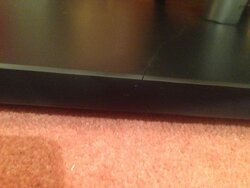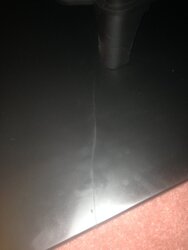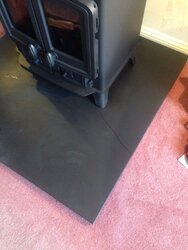Installer advised lighting wood burner 48 hours after installation completed. The day after we lit it, we noticed a crack. We have a stove thermometer and it did not go above 200 C.
The crack has run from the edge of the hearth, between the legs of the stove and stopped 20 cm short of the opposite edge. The crack has grown longer, but seems to have now stopped.
It is a honed slate hearth 850 mm square and 20 mm thick.
The installer is saying we must have stood on the hearth and caused the crack and is changed his mind from initially the whole installation is to be re-done to it being our fault.
He has advised us to have the hearth repaired at our cost.
What do people think and where do we go from here? Thank you.
The crack has run from the edge of the hearth, between the legs of the stove and stopped 20 cm short of the opposite edge. The crack has grown longer, but seems to have now stopped.
It is a honed slate hearth 850 mm square and 20 mm thick.
The installer is saying we must have stood on the hearth and caused the crack and is changed his mind from initially the whole installation is to be re-done to it being our fault.
He has advised us to have the hearth repaired at our cost.
What do people think and where do we go from here? Thank you.




